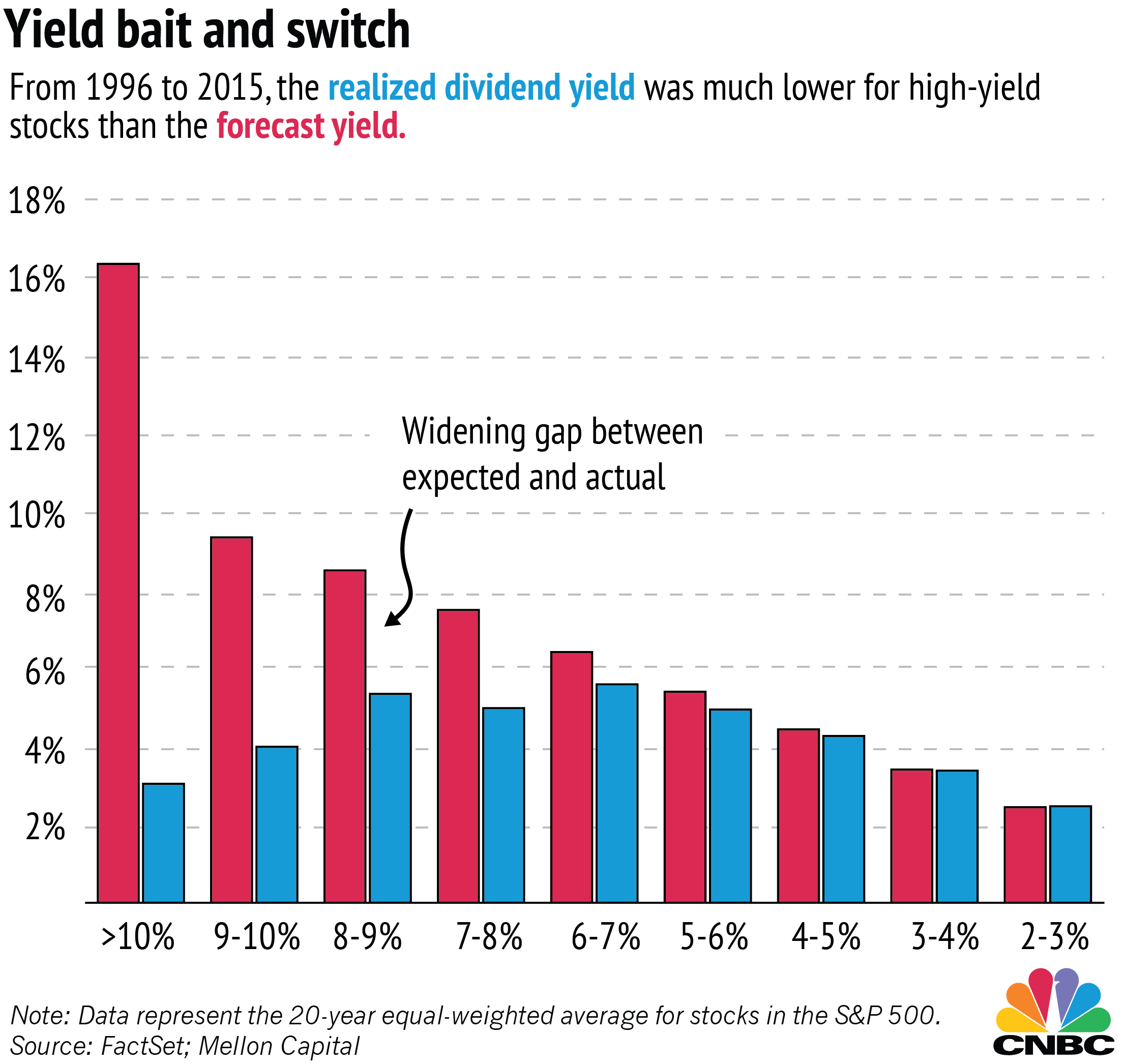When it comes to high-dividend stocks, it turns out that you often don't get what you pay for.
In this era of low interest rates, investors are seeking out dividend stocks with high dividend yields — the expected annual payout divided by the price. But often those expected yields never come to pass. The actual payout over the next year tends to be much lower, according to new data compiled by Mellon Capital, a BNY Mellon investment boutique.
If yield calculations suggested that an investor should have expected to get back about 9 percent in dividends, those investors actually only earned back around 4 percent, according to data from the last two decades. Those investors would have been better off investing in companies that pay in the 6 to 7 percent range, which returned an average of more than 5 percent.






